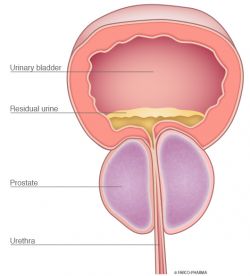Residual urine examination
Causes for the formation of residual urine
A healthy bladder is completely emptied during urination. However, various bladder diseases may involve conditions in which the urinary bladder is no longer able to be completely emptied during urination, resulting in the formation of so-called residual urine.
The causes of residual urine may be neurological, e.g. due to a spinal injury or disorders of the nervous system or due to mechanical obstructions of urine flow in men. The most common diseases that result in an increase in residual urine include enlarged prostate (men), narrowing of the urethra and nervous disorders of the bladder (neurogenic urination or micturition disorders).
In women, anatomical conditions pose additional risks for various bladder disorders. Due to a relatively short urethra in women, the path to the urinary bladder is not very long for bacteria. In addition, the urethra and the anus, from which most cases of bacterial introduction originate, are located more closely together in women than in men. Certain life choices or circumstances also play a role in the formation of residual urine with corresponding outcomes in women.
Potential consequences of prolonged residual urine
Residual urine has a negative impact on the flushing of the bladder and poses the risk of microorganisms becoming established on the inner wall of the bladder and triggering urinary tract infections. In addition to recurrent urinary tract infections, prolonged residual urine in the bladder may also result in bladder and kidney infections or cause the bladder muscle to become distended and flaccid. Residual urine may also provide favourable conditions for the formation of urinary stones if urine retention remains untreated for a prolonged period. Residual urine may back up into the kidneys, resulting in kidney failure or chronic kidney damage.
Residual urine examinations are an important urological method to prevent potential chronic bladder diseases.
How is the examination performed?
Residual urine examinations are performed using ultrasound immediately following urination. Here, the patient urinates normally ("like always") without excessive pushing. During the examination, the physician places the ultrasound probe on the lower abdomen and is able to measure the residual urine exactly on the monitor. The examination is not unpleasant or painful.











